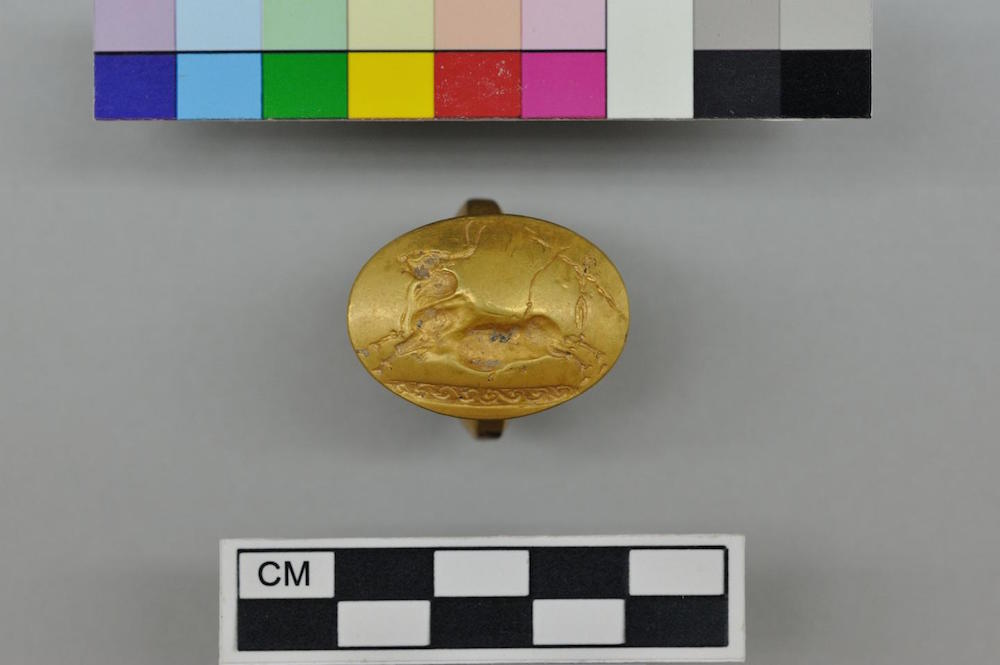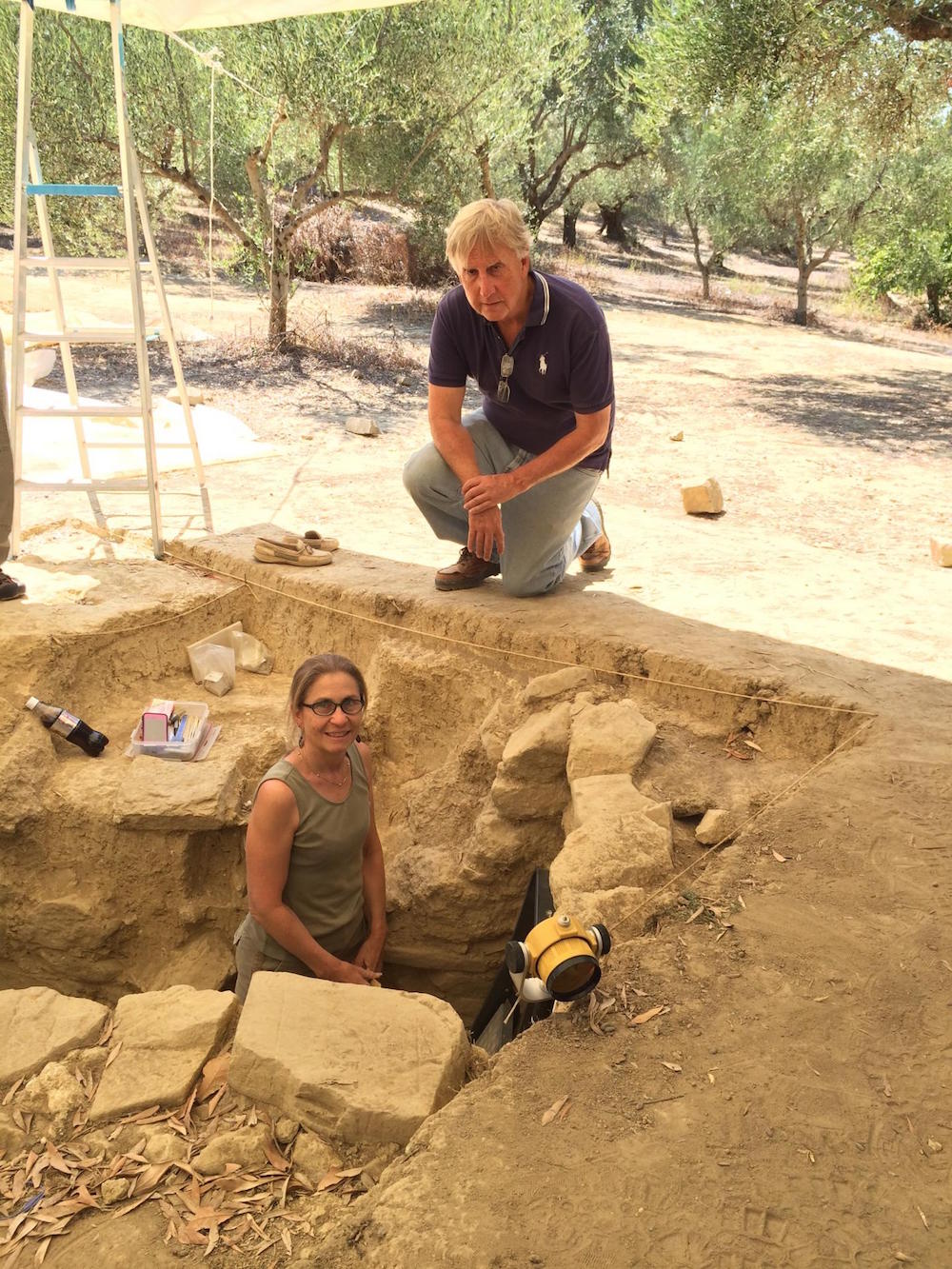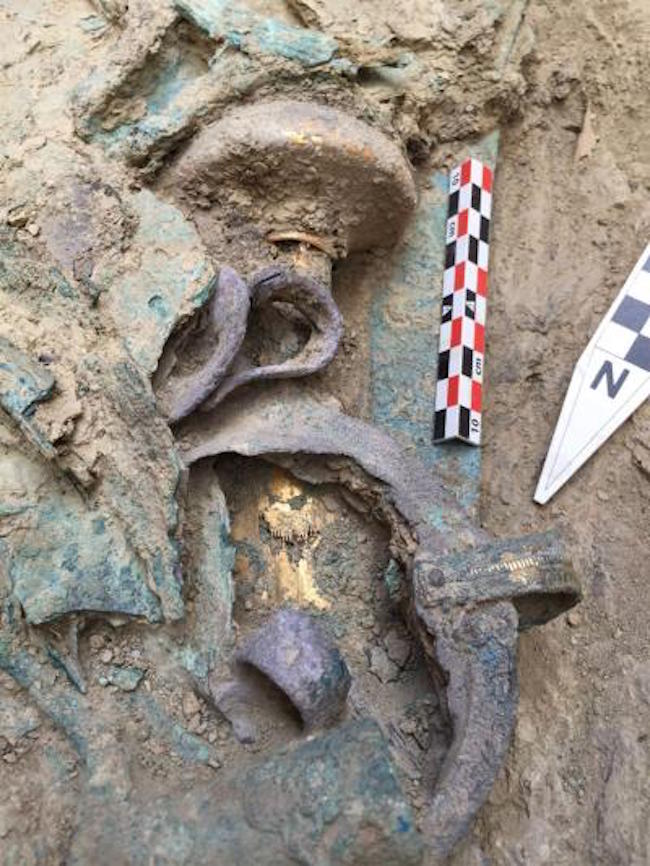Gem-Filled Warrior's Tomb Discovered in Ancient Greek City

Archaeologists who thought they were excavating the site of an ancient house in Greece recently uncovered something much more rare: a wealthy Bronze Age warrior's tomb, chock-full of precious metals and colorful gemstones.
The tomb, which dates back some 3,500 years to 1500 B.C., was found by an international group of researchers led by archaeologists from the University of Cincinnati. Among the items found in the ancient tomb is a bronze sword with an ivory hilt covered in gold. Gold cups and jewelry, as well as hundreds of beads made from precious stones like amethyst and jasper, also surrounded the remains of the deceased Mycenaean warrior, who once lived near what is now the city of Pylos, on the southwest coast of Greece.
Archaeologists were excavating a previously unexplored field when they made the discovery. For decades, University of Cincinnati researchers have been digging around the city of Pylos as part of the Pylos Regional Archaeological Project, which seeks to uncover the history of the Bronze Age center known as the Palace of Nestor, an extensive complex that is mentioned in Homeric legend. [The 7 Most Mysterious Archaeological Finds on Earth]

When they started digging up this particular field last May, archaeologists thought they were about to uncover the remains of a perfectly ordinary Bronze Age house, said Jack Davis, a professor of Greek archaeology at the University of Cincinnati and one of the researchers who helped unearth the ancient tomb.
"We put a trench in this one spot because three stones were visible on the surface," Davis said in a statement. "At first, we expected to find the remains of a house. We expected that this was the corner of a room of a house but quickly realized that it was the tops of the walls of a stone-lined grave shaft."
Mycenaean grave shafts, or shaft tombs, are rectangular burial structures buried fairly deep underground. The warrior's grave shaft measured about 5 feet (1.5 meters) deep, 4 feet (1.2 m) wide and 8 feet (2.4 m) long. Archaeologists dug for two weeks, to a depth of about 3.3 feet (1 m) before uncovering any of the treasures that had been buried alongside the body in the grave.
But eventually, the treasures came to the surface (and kept coming). In addition to the golden weapons and precious beads, the warrior was laid to rest with a host of other treasures, including carved ivory sculptures depicting griffons and lions midfight. The tomb also held dozens of seal stones, or gemstones, likely produced on the island of Crete and engraved with images of goddesses and animals.
Sign up for the Live Science daily newsletter now
Get the world’s most fascinating discoveries delivered straight to your inbox.
The fact that all of these treasures were left untouched for thousands of years is a source of celebration for Davis and his colleagues.
"It's almost as if the occupant [of the grave] wants his story to be told," Davis said.
Ancient mystery
The researchers are still trying to figure out just who this ancient warrior may have been. The warrior's remains predate the rule of King Nestor, who once resided at the nearby Palace of Nestor, by about 200 to 300 years, said Shari Stocker, a senior research associate in the University of Cincinnati's Department of Classics.

"This latest find is not the grave of the legendary King Nestor, who headed a contingent of Greek forces at Troy in Homer's 'Iliad.' Nor is it the grave of his father, Neleus. That means he was likely an important figure at a time when this part of Greece was being indelibly shaped by close contact with Crete, Europe's first advanced civilization," Stocker said in a statement.
The many seal stones found in the grave, as well as several of the other artifacts, suggest that whoever this ancient warrior was, he had some kind of association with the Greek island of Crete, home to the Minoan civilization. Whether he fought there or traded with the people of the island remains unclear, Davis said.
The treasure-filled tomb could help researchers answer other important questions about the history of this area of Greece during the Bronze Age. The rulers at the Palace of Nestor once governed an area encompassing all of modern Messenia in western Greece, which supported more than 50,000 inhabitants at the time. But the warrior's tomb predates this rule, suggesting that the area began to flourish before King Nestor came along, according to the researchers. Whether the area (and the warriors buried beneath its fields) gained their wealth through raiding or trading is one of the mysteries that Davis and Stocker hope to solve.
Follow Elizabeth Palermo @techEpalermo. Follow Live Science @livescience, Facebook & Google+. Original article on Live Science.

Elizabeth is a former Live Science associate editor and current director of audience development at the Chamber of Commerce. She graduated with a bachelor of arts degree from George Washington University. Elizabeth has traveled throughout the Americas, studying political systems and indigenous cultures and teaching English to students of all ages.









